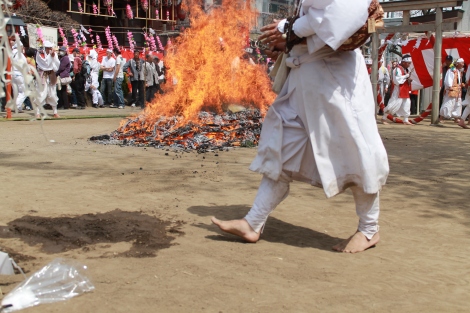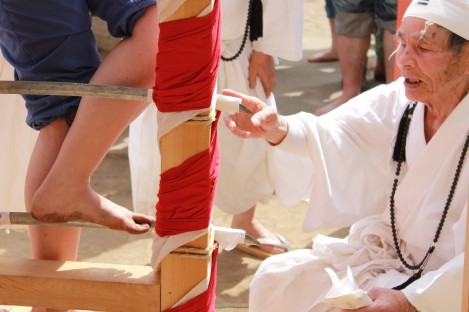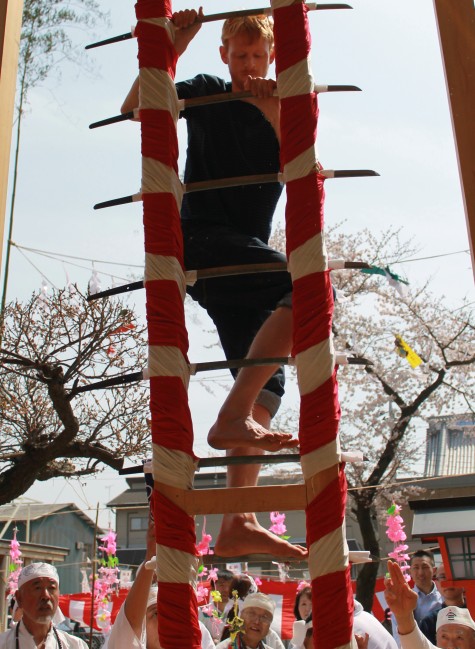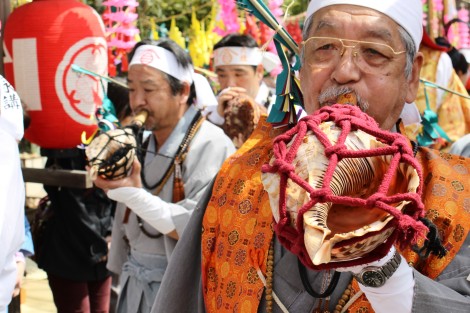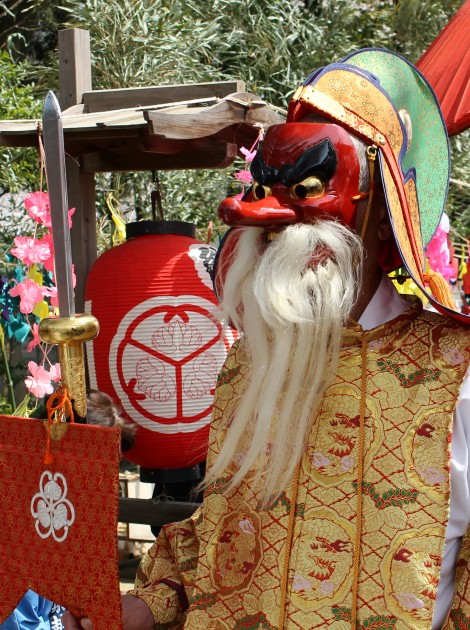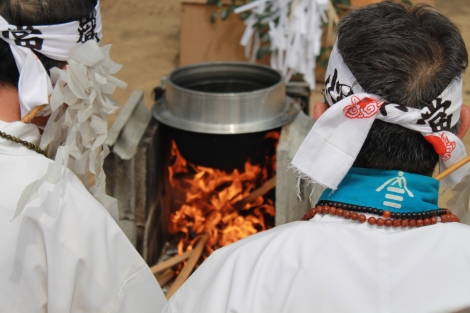Opening rituals done, and now begins the fun.
(Part 1 of this post can be found here.)
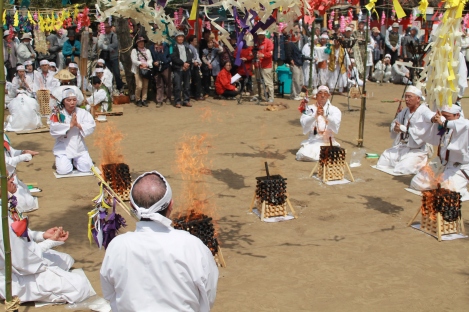
These five lit up goma precede the main fire of saito goma. The number of five represents a variety things in Esoteric Buddhism: five types of wisdom, five buddhas, or five luminous kings (明王). In this ritual, these deities are called down.
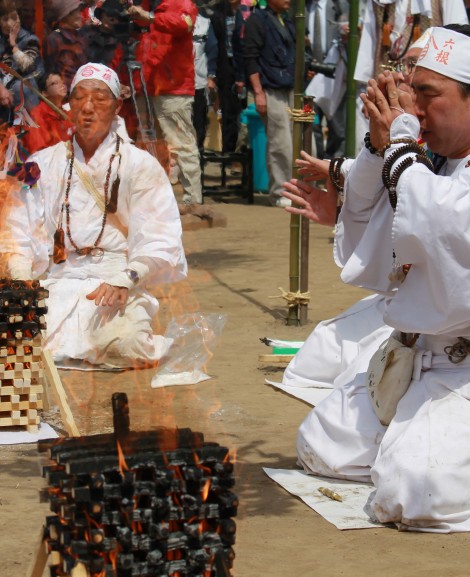
As the deities descend, the circle of practitioners chant and form hand mudra, both of which are meant to guard the deities against the scorching flames.

Now the main "saito goma" lights up. Characteristic of Shugendo, the saito goma is done outdoors with long spruce branches that billow out smoke. Formerly, it was conducted in the mountains. The name of this one - Ontake-san hon goma 御岳山本護摩 - suggests that it was traditionally held on Mt. Ontake itself.

Here is one of the first gyoja 行者 (practitioners) to walk across the coals in what is called hi-watari 火渡り, literally "fire crossing." The white salt you rub your feet in before the coals may lessen some of the heat, but not by much! This type of event was formerly practiced by shugen specialists after sustained periods of ascetic practice in the mountains. It was believed that these austerities in the mountains awarded them supernatural powers. They could then showcase these powers at events such as this one in order to attract lay followers (an important source of income).

A young girl carried across by a specialist. Shortly after, others in line were discouraged from following suit, given the danger of falling.

Ha-watari 刃渡り, or "sword crossing," is less commonly practiced than the hi-watari. Sharp sword blades make up the rungs of the ladder, which leans against a wooden tower in the picture. Luckily, a regular ladder takes you down the other side.

